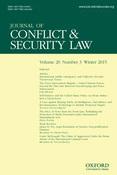The Force Intervention Brigade: United Nations Forces beyond the Fine Line between Peacekeeping and Peace Enforcement
Lars Müller – 2015
As United Nations (UN) peacekeeping evolved from interposition forces to multidimensional missions, the UN adjusted its peacekeeping principles and allowed a wider use of force. As the latest adjustment, the Security Council adopted a new mandate for UN Organization Stabilization Mission in the Democratic Republic of the Congo creating the ‘Force Intervention Brigade’, described as the first contingent of troops to conduct targeted offensive operations against armed groups. However, this role of the UN as an enforcement actor within a non-international armed conflict was not prepared by an assessment of the rules applicable to UN missions. These rules provide the Force Intervention Brigade with an ambiguous double status being at the same time a specially protected peacekeeping force and a party directly engaged in hostilities. As a consequence, peacekeeping missions as a whole are put at a higher risk of failing to perform their assigned mediation between the conflict parties and of themselves becoming the target of attacks. As a preliminary policy advice, I propose a clear distinction between peacekeeping and peace enforcement troops with a view to protect the peacekeeper’s perceived legitimacy and to reconcile the status of peace enforcement troops with the law applicable to the conflicts they, in fact, became a party to.

